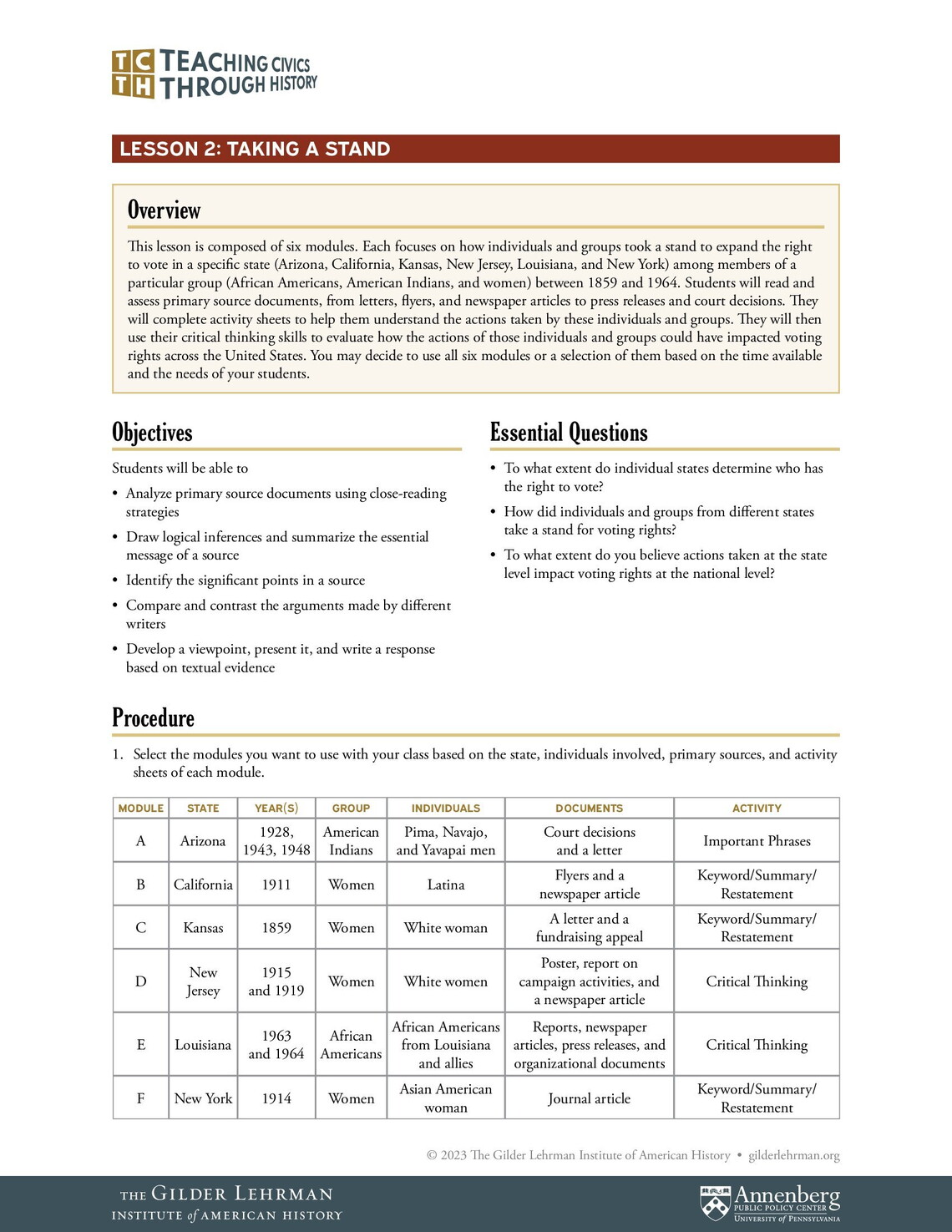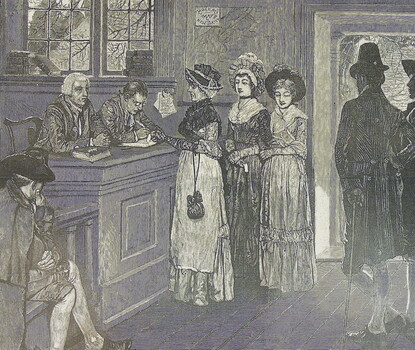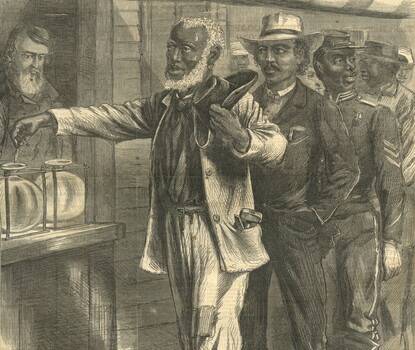"Taking a Stand for Voting Rights: Six States, Six Stories, One Goal"
This unit, written by 2010 National History Teacher of the Year Nathan McAlister, is one of the Gilder Lehrman Institute’s Teaching Civics through History (TCTH) resources, designed to align with the Common Core State Standards. These units were developed to provide students with foundational knowledge of the historical roots of issues their communities and the nation are facing while building their literacy, research, and critical thinking skills.
















